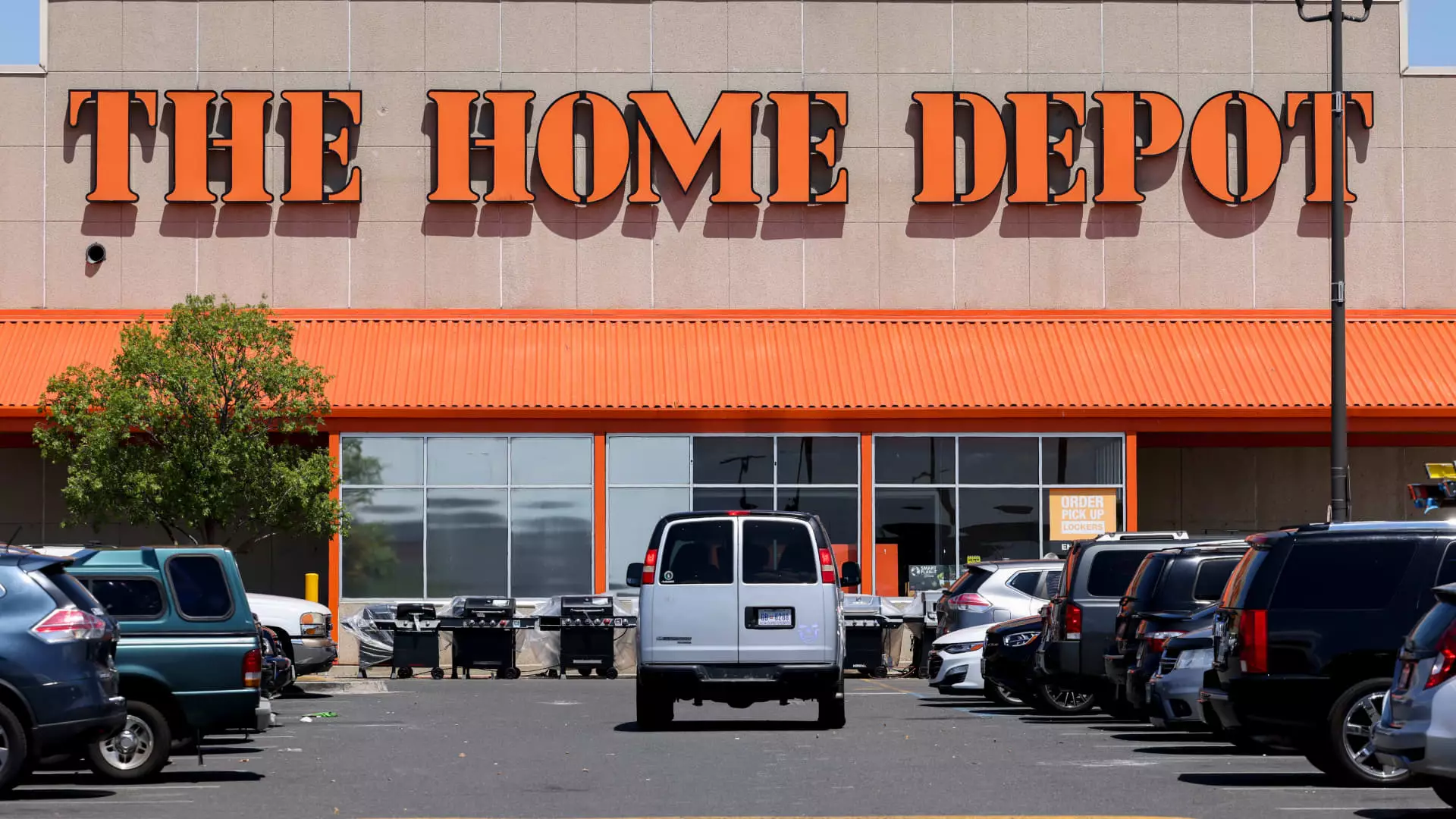In the dynamic world of retail investing, analysts often play a crucial role in shaping investor sentiments. Recently, two prominent retailers, Home Depot and Best Buy, have been under the financial analysts’ lens, revealing contrasting outlooks that investors should consider.
Home Depot: A Bright Outlook Amidst Market Fluctuations
Home Depot has caught the attention of Wall Street analysts, particularly the Telsey Advisory Group, known for its comprehensive assessments in the retail sector. Following a recent upgrade of Home Depot’s stock to a buy-equivalent classification, investors are naturally intrigued. The firm raised its 12-month price target from $360 to $455 per share, signaling a potential 14% upside—an assertion that paints an optimistic picture for the home improvement giant.
Despite the anticipated “continued softness” in third-quarter sales, Telsey projects a brighter horizon for 2025. They anticipate strong profit margins driven primarily by three key factors: declining mortgage rates, ongoing recovery efforts from recent hurricanes, and favorable comparisons due to past high demand following the pandemic. These catalysts collectively bolster the company’s strong business fundamentals, hinting at a sustained market share growth in the competitive home improvement space. Additionally, a strategic focus on expanding their professional service sector, which caters to larger projects, is expected to yield tangible returns.
Interestingly, while Home Depot’s stock has appreciated nearly 17% year-to-date, this growth lags behind the S&P 500’s more than 25% surge. The disparity in performance raises questions about market positioning and investor expectations. Nonetheless, Telsey’s optimism coincides with an overarching sense of economic resilience, coupled with easing inflation rates. The Federal Reserve’s recent interest rate cut should, theoretically, pave the way for cheaper mortgages, igniting a spark in the housing market that could further benefit Home Depot.
The Cautionary Tale of Best Buy
In stark contrast, Best Buy faces a tumultuous landscape, with Citi Group cutting their price target for the retailer from $115 to $109, while still maintaining a buy rating. This tempered outlook arises from concerns over potential tariffs proposed by President-elect Donald Trump, which could adversely affect the electronics retailer heavily reliant on imports from China. Such trade policy uncertainties introduce a “near-term overhang” that continues to loom over Best Buy’s stock performance.
However, it’s not all bleak. Citi remains optimistic about what they identify as the “artificial intelligence-driven tech replacement cycle,” which suggests a sustained demand for upgrades in consumer electronics. The anticipation of new gadgets—smartphones and personal computers that incorporate AI advancements—could potentially steer customers towards Best Buy, thereby stimulating sales in the face of adversity.
Additionally, if interest rates continue to lower, the resulting boost to the housing market might lead to a surge in sales of large-ticket items such as appliances and home entertainment systems—areas in which Best Buy excels. Yet, the ongoing declines in Best Buy’s stock highlight the significance of market sentiments and external economic pressures.
In examining the fields where these two retailers operate, it is evident that Home Depot and Best Buy are at different crossroads. Home Depot appears well-positioned to leverage favorable economic indicators and strategic growth initiatives, making it a reputable candidate for investors seeking long-term value. On the other hand, Best Buy’s outlook hangs in a delicate balance with external factors like international trade policies and tariffs, which have a substantial impact on its pricing strategy and inventory costs.
As investors prepare for forthcoming earnings reports—Home Depot anticipated shortly before the upcoming market opening, and Best Buy set for November 26—the divergent sentiments encapsulated in the assessments of these two retail giants serve as a reminder of the variability within consumer-focused industries. Each company faces its unique set of challenges and opportunities; thus, strategic investment decisions should align with an overall understanding of market trends and noise.
Given the contrasting situations of both companies, investors would do well to remain vigilant, not only monitoring their earnings but also the broader economic trends that could sway retail performance in the months to come. The nuances in the retail sector require precision and adaptability, and awareness of these variations could ultimately drive informed investment choices.

